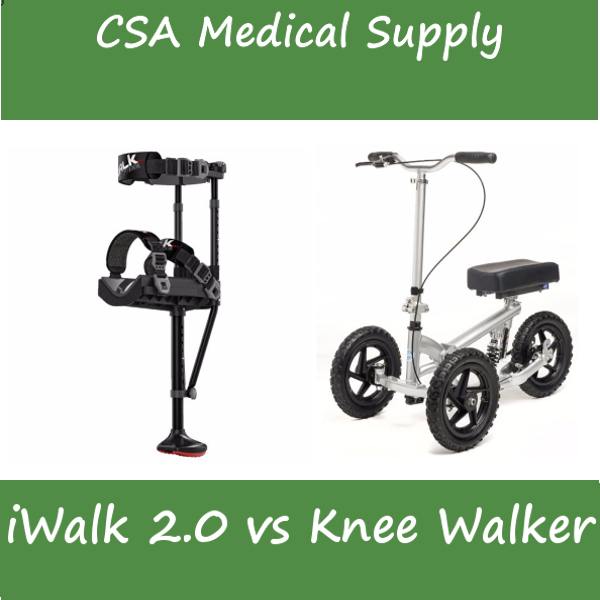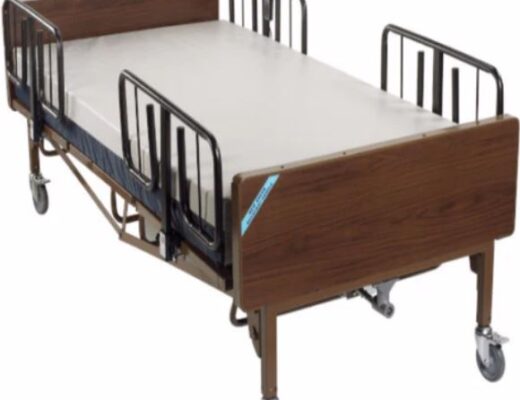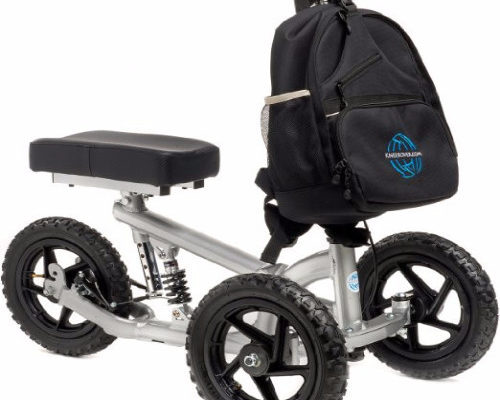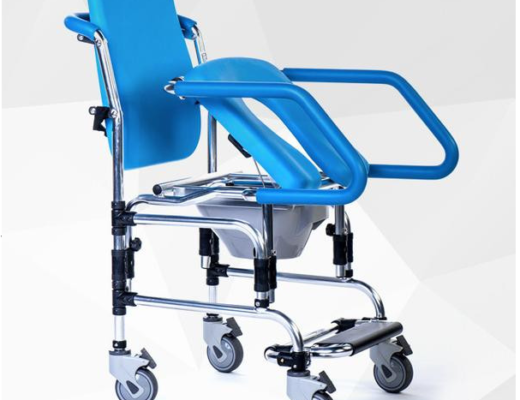In this article we look at the two most popular crutch alternatives on the market today the iWalk 2.0 and the extremely popular steerable knee scooter. Both the iWalk 2.0 and knee walker allow you to ditch your crutches and end the pain and discomfort that come with using those uncomfortable bulky crutches.
These awesome alternatives to crutches allow you to go about your daily routine without having to hop around on one leg. No longer do you have to use your upper body for strength and support. These products allow you to live the normal active lifestyle you are accustomed to, while avoiding instability, irritation, and inconvenience associated with traditional crutches. Let us take a closer look at what they have to offer.
iWalk 2.0
Imagine being able to walk and use your hands even after a lower leg injury. With an iWalk 2.0, you can do pretty much everything you used to do before your accident. This device comprises of a hands free design that allows a user to maintain an active lifestyle while at the same time, allowing your limb to heal. iWalk 2.0 works by supporting your injured leg behind you, while the weight of your body rests comfortably on your shin and knee as opposed to your armpits. An iWalk is ideal for any lower leg injury.
All you have to do is place the shin of your injured leg – bent 90 degree- on the knee pad, use their new strapping system to secure your leg in place, and voila! Go about your day without being confined to your uncomfortable traditional crutches.
Benefits of an iWalk 2.0
Its lateral offset catamaran foot will provide you with great balance and stability
- You can walk up the stair easily
- This item is customizable to fit a wide variety of sizes
- It supports users weighing up to 275 lbs
- You can use it for right or left leg support
Knee Walker
Another great crutch alternative is a knee walker. Also referred to as a knee scooter, it will help you get around both indoors and outdoors. All you have to do is simply rest your injured leg on its padded seat at a 90-degree angle.
Most of these devices comprise of a steering handlebar that makes it easy for you to navigate. Its design resembles that of a scooter (hence its name). Knee walkers feature a thick comfortable kneepad and an adjustable height range. The height range makes it great for both tall and short patients.
The height range allows it to be passed from one family member to another if need be. Most knee walkers come with a vinyl pouch that can be used to carry items such as grocery bags etc – however, you can opt for one that is not inclusive of this feature.
Benefits of a Knee Walker
- Allows you to get around without having to hop from place to place
- Navigating in your home or on the streets is relatively easy
- Helps keep your injury partially elevated
- Comes with a comfortable foam padded knee pad
To better understand key features of both crutch alternatives, let us do a quick comparison of a both the knee walker and the iWalk 2.0
Usage
- iWalk 2.0 uses a hands free design.
- Knee walkers requires you to use your hands for navigation
Design
- iWalk allows you to walk normally by strapping your injured leg onto it and using its lateral offset stabilized foot for support
- Knee walkers comprise of three or four wheels that allow a user to scoot around
Stairs
- With an iWalk 2.0, you can easily walk up and down the stairs with no difficulties
- Knee walkers cannot be used on stairs, only on flat or slightly hilly surfaces.
User Performance
- An iWalk 2.0 allows a user to do activities such as shoveling snow, clean your car, shop, etc
- Knee walkers are a bit limiting because you require your hands for navigation.
Conclusion
These above mentioned items are great crutch alternatives. You can now save your upper body the pain and energy required to operate on crutches. A few things to keep in mind before making a purchase are:
- These devices cannot be used by an individual with injuries of the knee or above
- Not suitable for persons who are unable to bend knee at 90 degrees
- Not suitable for people with injuries or limitations in both legs





No Comments